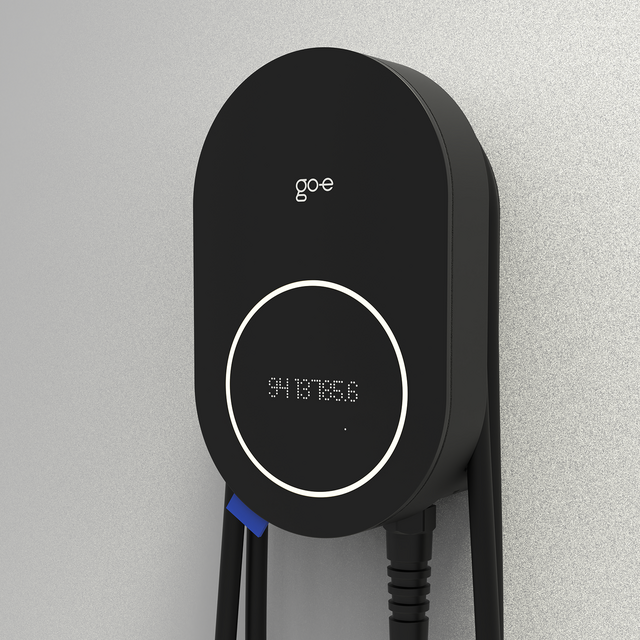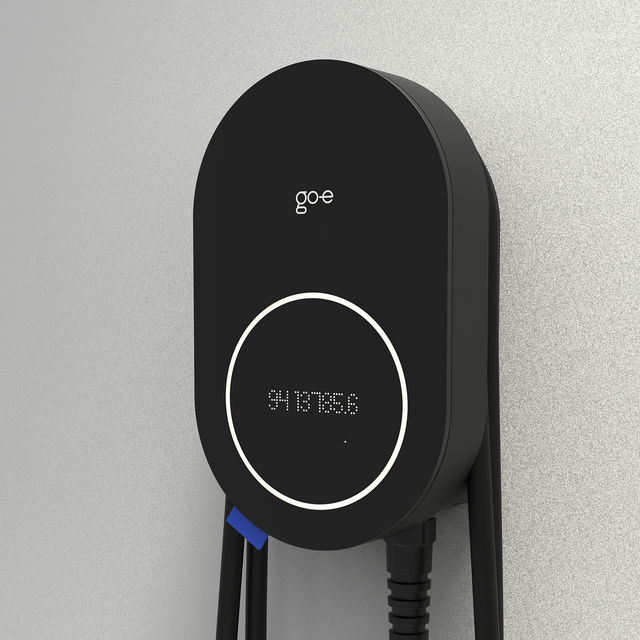Plug and Charge: The future of Charging
Last updated:
You drive your electric car to a public charging station, plug in the cable, and that’s it! Charging starts automatically. No need to scan QR codes, download multiple charging apps, carry around charging cards from different providers, or even pull out your credit card. Sounds like something out of Back to the Future? It’s not! With Plug and Charge, charging and paying at public stations becomes much simpler, faster, and, most importantly, stress-free.
In this article, we explain how Plug and Charge works, what's behind it and how it takes charging to a whole new level.
Quick access to the content
What is Plug and Charge?
Plug and Charge is a technology that makes charging your electric car almost as easy as charging your smartphone—well, almost. Once you connect your EV to a compatible charging station, the station and your vehicle automatically communicate with each other.
It’s important to note that not only the charging station needs to support Plug and Charge, but your car does too. Many new EV models already have this feature, and some older models can also activate it through relevant software updates.
If both your EV and the chosen charging station support PnC, there’s no need to authenticate with an app, charging card, or QR code to start charging.
Unfortunately, there’s still no universal system in place, which can be frustrating for many people. Depending on the provider—and sometimes even on the specific charging session—you might have to pay via app, credit card, or QR code. All these different payment methods can be overwhelming and make switching to an electric car less appealing for some.
However, Plug and Charge technology is set to solve this issue in the future. You simply plug in your car, and it charges. Billing? That happens automatically in the background, based on the charging contract you’ve set up.
Challenges that had to be overcome
Plug and Charge sounds like a simple process, but the devil is in the detail. Implementing this technology came with several challenges that had to be addressed. Here are some of the biggest hurdles—which have now largely been overcome:
Standardisation and interoperability
Challenge: For Plug and Charge to deliver the seamless charging experience it promises, a high level of interoperability between charging stations and electric vehicles is essential. However, different car manufacturers and charging stations previously used various systems and communication protocols.
Solution: Thanks to the ISO 15118 standard, there is now a unified framework. This international standard defines how communication between the vehicle and the charging station works and establishes security mechanisms. This ensures strong interoperability and robust cyber security.
Security and data protection
Challenge: Charging your EV involves the exchange of highly sensitive data in the background, such as payment information and identity details. Strict security standards are necessary, especially as rising cybercrime demands stronger cyber security and data protection measures.
Solution: Plug and Charge, following the ISO 15118 standard, includes multiple security measures—such as encrypted communication between the EV and the charging station and the use of digital certificates. These certificates are issued by a Certificate Authority (CA) within a Public Key Infrastructure (PKI), enabling secure management of digital certificates to ensure data authenticity and integrity.
Other hurdles had to be overcome, but a solution to most of them have been found:
Certificate management (e.g., continuous updating of validity certificates)
Compatibility with various payment systems
Costs and expansion of infrastructure (the Plug and Charge network is steadily growing)
What is ISO 15188?
ISO 15118 is an international standard for bidirectional communication between an electric vehicle and a charging station. Thanks to ISO 15118, you can use Plug and Charge at charging stations from a wide range of providers.
No need to worry! All data is transmitted according to the latest security standards in line with ISO 15118, ensuring that no unauthorised party can access your charging data. Digital certificates enable encrypted and secure communication. Every vehicle is assigned a digital fingerprint—specifically, an OEM Provisioning Certificate, which acts as a type of vehicle ID that automatically identifies the car at a Plug & Charge-enabled charging station. Your charging contract is also digitally stored in the vehicle.
So, as soon as you connect your EV to the charging station, the station decrypts all the information needed for authentication, such as your vehicle ID and the stored charging contract. This data is then sent to the backend system for authorisation and activation of the charging point. Once authentication is successful, the charging process begins. Payment is handled automatically through the contract you previously arranged with your mobility service provider.
Does Tesla Use Plug and Charge?
Tesla drivers reading this might be thinking, “What nonsense! This is nothing new for Tesla owners. We’ve been using this technology for years.”
That’s not entirely true. The technology Tesla uses is called Autocharge. While it may seem like the same technology from a user’s perspective, the processes running in the background are quite different. Let’s take a closer look at the differences.
What is Autocharge?
Autocharge is a technology used at Tesla charging stations, among others. However, it does not follow the ISO standard. Instead of using digital certificates for identification, Autocharge relies on the hardware address of the vehicle’s network adapter—known as a MAC address—assigned by car manufacturers like Tesla. This MAC address carries certain data protection and security risks for users because it can be linked to a billing contract in the backend with minimal security measures in place.
In contrast, Plug and Charge meets high security standards thanks to a complex validation system, ensuring that only authorised vehicles can charge and be billed.
Currently, Autocharge serves more as a transitional solution for charging infrastructure. The rollout of Plug and Charge is taking longer due to its complex security systems and ongoing industry discussions. However, Plug and Charge is very likely to become the standard for automated charging and payment in the future, offering significantly stronger IT security and, therefore, greater protection for users.


Ronald Kroke - Head of Marketing at go-ePlug&Charge is a real gain in convenience
At the publicly accessible go-e Chargers at the company site, I currently authenticate as the driver of a Hyundai IONIQ 5 using an RFID card, and at public charging stations, I mostly use an app. It’s not a huge effort, but still a few extra steps compared to charging at a Tesla Supercharger. That’s why I see Plug and Charge as a real step up in convenience—offering a much higher level of cybersecurity and data protection compared to Autocharge.
What would make it even more exciting in the future is if Plug and Charge could automatically select the cheapest charging tariff for me at a public charging station.
How is Plug and Charge implemented?
Plug and Charge is implemented either through a central cloud solution or directly through the electric vehicle itself.
When communication happens directly via the EV, the digital certificate required for authentication is stored in the vehicle. The electric vehicle communicates directly with the charging station, and all relevant data is exchanged.
If Plug and Charge operates through a cloud solution, identification and billing are handled via a central database. The charging station communicates with this database, which confirms that the vehicle is authorised to charge.
Both methods have their advantages and disadvantages. Direct communication with the EV is often faster, while the cloud solution is more flexible and versatile, especially when using various charging stations operated by different providers.
Which Public Charging Stations Support Plug and Charge?
Charging stations such as IONITY or Aral Pulse ultra-fast charging stations support Plug and Charge. However, the number of PnC-capable public charging points is constantly increasing, especially in Germany. The operators of fast charging stations along motorways in particular are pushing ahead with the expansion.
How can you recognise Plug and Charge capable charging stations?
![[Translate to Englisch:] Plug and Charge [Translate to Englisch:] Plug and Charge](/fileadmin/_processed_/0/3/csm_plug-and-charge_2b72230e10.png)
Plug and Charge-capable charging stations can be recognised by the fact that they have a PnC sticker on them. You can also see whether the nearest charging station supports Plug and Charge on the sat nav screen of your electric car.
Which Wallboxes Support Plug and Charge?
Here is a list of wallbox models that support Plug and Charge technology and are Plug and Charge ready on the hardware side:
go-e Charger PRO
ABL eM4
innogy eBox Professional Wallbox
DaheimLader Touch
Amperfied Heidelberg Connect Business
Elli Charger PRO
Mennekes AMTRON® Professional
Webasto Live
Webasto Next LU
Walther Werke smartEVO 11
TechniColt 1100 Smart
Juice Charger me
Keba x-series
The go-e Charger PRO is already equipped with hardware to support ISO 15118 technology. This means that in the future, your EV will automatically be recognized, authorize itself, and start charging as soon as you plug in the cable. Whether your wallbox is installed outside your home or in an underground garage, you won’t need an RFID chip anymore to start charging or protect your wallbox from unauthorized use.


Ronald Kroke - Head of Marketing at go-eWe want to offer more charging convenience with the PnC-capable wallbox
For wallboxes, the need for authentication and billing via Plug and Charge hasn’t been as evident so far, since they are often used in private single-family homes. However, as charging solutions become more common at company sites or in multi-family buildings—where a charging station is often shared by multiple users—Plug and Charge offers great potential for more convenient charging. That’s why go-e has chosen to equip the go-e Charger PRO with hardware that supports ISO 15118.
Which Electric Cars Support Plug and Charge?
The list of plug and charge-capable electric cars is growing. The Audi e-tron, the BMW i5, the Hyundai IONIQ 6 and all VW ID models with software version 3.1 or higher, as well as many others, are already Plug and Charge-capable. Here is a broader list of electric cars that support Plug and Charge:
Audi e-tron
Audi e-tron Sportback
Audi Q8 e-tron
Audi Q8 e-tron Sportback
Ford Mustang Mach-E
Lucid Air (ab Ende 2022)
Mercedes EQE
Mercedes EQS
Mercedes EQS SUV
Porsche Taycan
Porsche Taycan Cross Turismo
Porsche Taycan Sport Turismo
Škoda Enyaq iV
Škoda Enyaq Coupé iV
Smart EQ ForTwo
VW ID.3
VW ID.4
VW ID.5
VW ID.Buzz
Summary: Is Plug and Charge the future?
Yes, Plug and Charge is the future and is already being integrated into many electric cars and charging stations. This technology is not only convenient and secure but also an important step toward a fully automated e-mobility world. The easier and smoother charging becomes, the more people will consider switching to electric vehicles. In the coming years, it will likely become standard equipment.